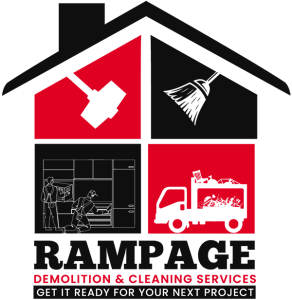Interior and exterior demolition are processes carried out in construction projects at different times. They involve removing structures to make way for new construction or alteration. While these seem like basic tasks, certain aspects must be considered to ensure efficient and safe demolition.
Interior and Exterior Demolition
Both interior and exterior demolition is an essential stage in numerous construction and reconstruction processes. It entails the systematic stripping of the building fabric, which includes the walls, floors, ceilings, and exterior parts. Effective demolition processes ensure safety, minimize environmental impact, and pave the way for new construction or renovations. The building’s age, materials, and local regulations determine the necessary measures for a successful demolition.
Use of Interior Demolition
Interior demolition is removing parts of a building that do not form the structure of the building, such as walls, floors, and ceilings. People use it frequently for various reasons, such as;
- Renovation: Renovations may require stripping interiors and removing walls, floors, or ceilings to create a new layout.
- Upgrading Building Systems: For example, if a building needs to alter its plumbing, electrical, or heating and cooling systems, interior demolition may be necessary to access the systems and make the alterations.
- Addressing Damage: When a building suffers from fire, water, or mold damage, interior demolition is frequently required.
What Precautions Do You Need to Take?
Whether interior or exterior, demolition can be dangerous if not done correctly. Here are some necessary precautions that you need to take:
- Develop a Demolition Plan: The demolition plan should detail the scope of the work, the strategies to use, the safety measures to observe, and the expected duration.
- Use the Right Tools and Equipment: Carefully select the tools and equipment to improve safety and efficiency during demolition. For instance, hydraulic excavators can demolish walls quickly and safely, while jackhammers can break concrete floors.
- Secure the Demolition Site: The area under construction should be well-fenced so that people do not approach the site. This may include erecting structures such as fences, displaying warning signs, and limiting access to certain areas.
- Remove Hazardous Materials: In most constructions, ancient ones, asbestos, lead paint, and other hazardous materials are present. We must clear these materials before the actual demolition process can begin.
- Hire a Qualified Demolition Contractor: Personnel with relevant expertise in demolition should carry out this susceptible operation. An expert demolition contractor will be able to do the job correctly and in the shortest time possible.
Ready to Make Your Demolition Project a Success?
Rampage Demolition and Cleaning Services can help you with every step of your interior or exterior demolition project, from planning and permitting to safe and efficient execution. Our experienced team uses the latest tools and techniques to ensure your project is completed on time and within budget. We also prioritize safety and environmental responsibility. So, what are you waiting for? Visit Rampage Demolition and Cleaning Services today!



